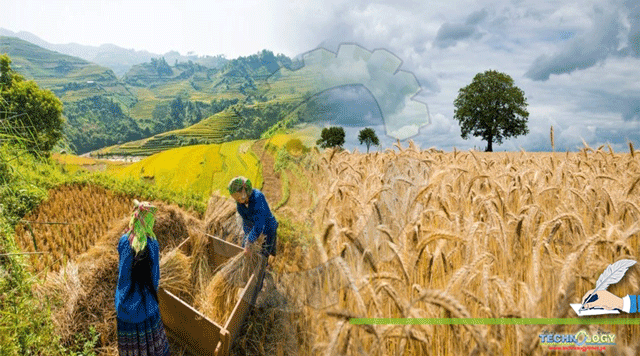Canola (Brassica napus L.) is market term and stands for “CANADIAN OIL LOW ACID”. It is a vegetable oil derived from canola plants (rapeseed). The scientist named, Keith Downey and Baldur R. Stefansson, University of Manitoba, Canada crossed two rapeseed cultivars of “napus” and rapa species of Brassica genus in 1970s, in an attempt to attain better nutritional profile with low erucic acid contents in its oil.

By Muhammad Mahran Aslam, Muhammad Ali, Mohammad Aquil Siddiqui, Imtiaz Ahmad Khan and Mahboob Ali Sial
Nuclear Institute of Agriculture (NIA) TandoJam Sindh-70060-Pakistan
Erucic acid, a naturally found contaminant present in most vegetable oil – is not a safety concern for most consumers as average exposure is less than half the safe level. But it may be a long-term health risk for children up to 10 years of age who consume high amounts of foods containing this substance. Canola, sesame and sunflower are the potential oilseed crops to overcome the current edible oil statistics in the country. Canola has become one of most important oilseed crop in the world. It will be a cost-effective choice for Pakistani farmers. Its oil is superior for human consumption due to low eurcic contents and its meal is an excellent source for animals and birds. In addition, its meal contains 38-40% protein which has a complete profile of amino acids including lysine, methionine and cysteine. Canola cultivation started in Pakistan during 2005-2006 by multinational companies. Since that time, open pollinated canola varieties are being developed by nuclear institute of agriculture (NIA), TandoJam and NARC, Islamabad in rapeseed group.
An approximate proportion of canola (15g) contains relatively low saturated fat (solid at room temperature) ˜1 g(gram), rich in MUFAs (heart healthy monounsaturated fatty acids) ˜ 9 g and PUFAs (polyunsaturated fatty acids) ˜ 4g. Monounsaturated fatty acids (MUFAs) and polyunsaturated fatty acids (PUFAs) present in canola are cardio protective substances. Moreover, canola contained higher amount of Omega -3 fatty acids (positive effects on low-density lipoprotein (LDL) oxidation, and insulin sensitivity). Fats and oils are important nutrients for human diet. It plays an important role for structural and functional development of human body and also a rich source of energy (09kcal/gram). The plant and animals are the rich source of edible oil and fat.
Edible oil is one of the essential commodity of routine use. Pakistan has been persistently and interminably deficient in its oil production. ˜70% of the domestic oil needs are fulfilled through imports and the trend will also get worsen with increase in population. Oilseed crops are categorized as minor crops in Pakistan. The change of food habit demands a more edible oil supply to meet the requirements of increasing populations day by day. The demand of edible oil in Pakistan was 4.316 million tons and its production was just of 0.544 million tons in 2019-20. To fulfil this demand, an export of worth US$ 3.068 billion (Rs. 474.77 billion) was done during 2020. A rise in population, climate change, depleting water resources, a clash with wheat in cropping system, absence of oilseed policy, lack of procurement system and import of low cost palm oil are the factors pushing the country towards food imports.
To overcome the deficiency of edible oil in country, different organization such as PEOC (Pakistan edible oil corporation), GCP (Ghee Corporation of Pakistan), NODP (National oilseed development program) and PODB (Pakistan oilseed development board) were established from 1977 to 1995. During 2017-2018, Government of Punjab had started a special “oilseed promotion initiative” which had tremendously increased an acreage of 59.6 thousand acres of canola and mustard with 30% more production than previous year. The success of this program lies in a subsidy of 5000 rupees per acre cultivation of oil crops and procurement price of Rs. 2500/40 kg of canola and sunflower. A rise of 46.55% in production of canola and mustard was also observed in 2019 due to its last year high market price value. So oilseed production is directly related to its high market value. Prime Minister of Pakistan had also launched an “oilseed enhancement program” to overcome its shortage in coming years.
Nuclear Institute of Agriculture (NIA), Tando Jam had established brassica breeding group with the intent to improve canola genotypes. A potential variety surhan- 2012 was developed from the mutants of Rainbow having high yield (35-40 mounds/acre) and oil content (45%). This variety shows 5% increase in yield than other cultivars in Pakistan. The distinguishing characters are erect, medium tall with long pods, bold seeded, vigorous plant growth with broad leaves, high oil content and tolerant to shattering, lodging, and insect pests and diseases.
Better availability of native seed varieties is imperative for the success of the canola cultivation across the country. The efforts being made in this regard need to be accelerated and taken to the level of small farmers rather than focused only on progressive growers.
Small farmers comprise more than 90% of our farming community and a little more incentive to peasants can yield promising results. Marketing of canola in Pakistan is not a big problem because of its versatility and wide use in human food, livestock and poultry feeds. Poultry feed has emerged as the biggest user of this crop after oil extraction in our country. Moreover, its other uses in paints, polymers, wood adhesives, synthetic fibres, fire foams, pesticides, medicines, cosmetics and papers make it an ideal crop to embed in our existing cropping patterns.
Canola is in indeed a miracle crop, and a little effort by the government to boost its cultivation may save billions of dollars being spent on edible oil import.